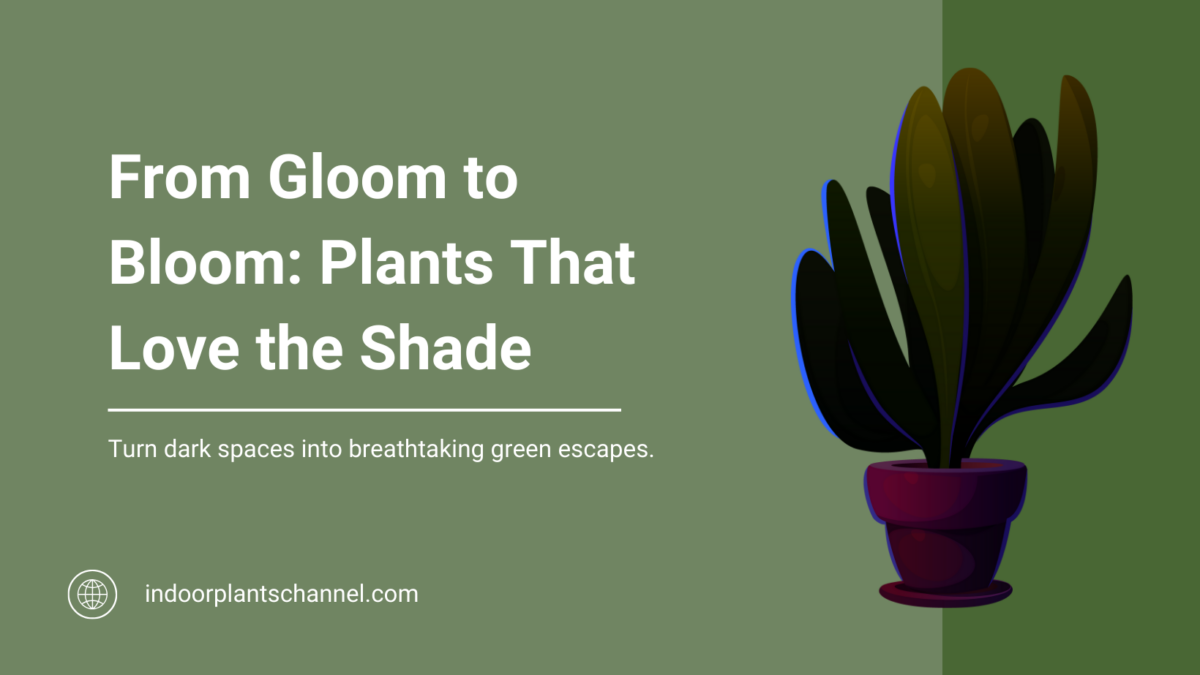Imagine a window that receives no direct sunlight—a space many would dismiss as inhospitable for plants. Yet, this overlooked corner of your home holds untapped potential for cultivating North Facing Window Plants, transforming it into a lush, thriving indoor garden. In a world where bright, sun-drenched spaces dominate plant care advice, the North Facing Window Plants offer a counterintuitive opportunity: a sanctuary for shade-loving species that flourish in low-light conditions.
Why does this matter now? As urban living spaces shrink and natural light becomes a premium commodity, understanding how to optimize every window’s unique characteristics is more relevant than ever. North-facing windows, often seen as a limitation, can become a canvas for creativity and biodiversity, challenging the assumption that plants need abundant sunlight to thrive.
What if the secret to a vibrant indoor garden lies not in chasing the sun but in embracing the shadows? This article explores how to transform these dimly lit spaces into verdant havens, unlocking their hidden potential.
The Importance of Choosing the Right Plants for North-Facing Windows
Selecting plants for north-facing windows isn’t just about aesthetics—it’s about aligning with the unique microclimate these spaces create. Unlike their sun-drenched counterparts, north-facing windows provide consistent, indirect light that mimics the understory of dense forests. This environment is ideal for plants like ferns, snake plants, and pothos, which have evolved to thrive in low-light conditions. Ignoring this alignment often leads to leggy growth, faded foliage, or even plant failure.
North-facing windows filter out much of the red and blue wavelengths critical for photosynthesis. To counteract this, consider supplemental lighting with full-spectrum LED bulbs, which can mimic natural sunlight without overwhelming the space.
By understanding these nuances, you can create a thriving indoor ecosystem. Think of it as working with nature, not against it—an approach that fosters both plant vitality and a deeper connection to your living space.
Understanding Light Conditions in North-Facing Windows
North-facing windows offer a unique light profile: steady but diffuse illumination. While often labeled as “low light,” this environment is more accurately described as low-intensity indirect light. The key challenge here is the absence of direct sunlight, which limits the availability of red and blue wavelengths essential for photosynthesis. This makes it critical to select plants that naturally adapt to such conditions, like calatheas or peace lilies.
External obstructions—trees, buildings, or overhangs can further reduce light penetration. To assess light levels, a simple shadow test can be revealing: faint, blurry shadows indicate low light intensity. For plants requiring more energy, integrating grow lights with adjustable spectrums can bridge the gap effectively.
By treating north-facing windows as microclimates, you can optimize plant placement and care. This approach not only enhances plant health but also transforms underutilized spaces into vibrant, living corners.
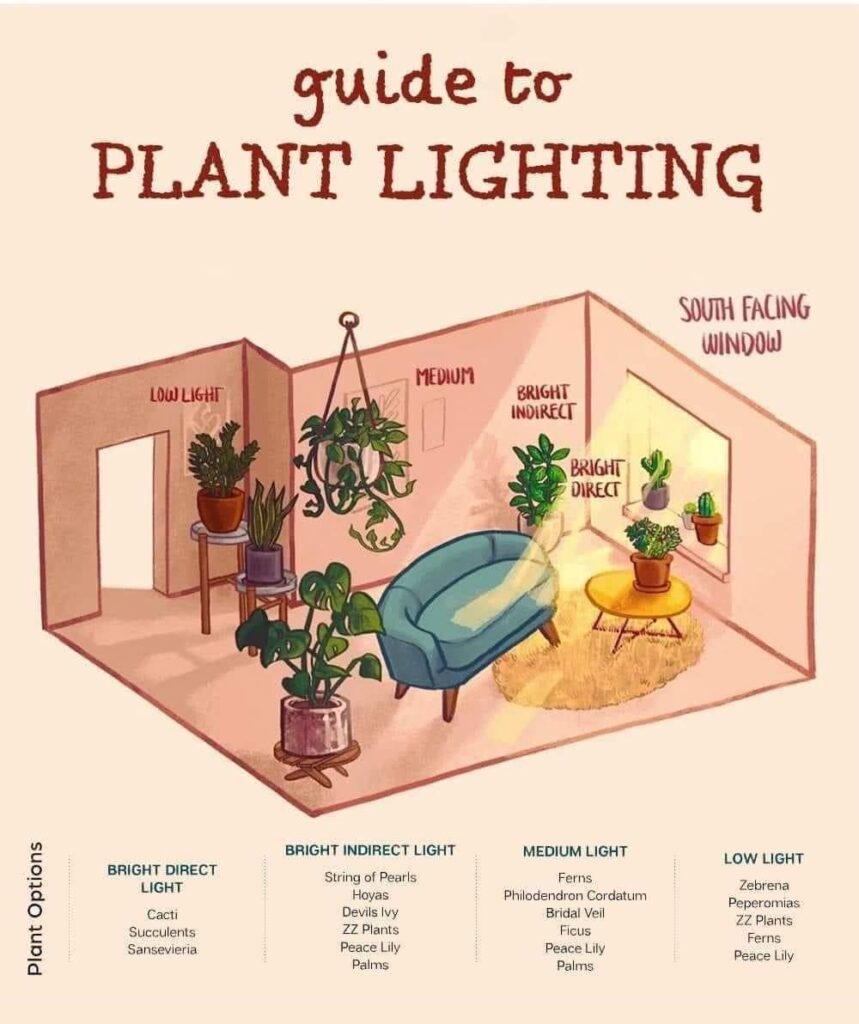
Understanding North-Facing Light Exposure
North-facing windows lack direct sunlight but they provide a consistent, diffuse light that mimics the understory of a forest. This makes them ideal for plants like ferns and snake plants, which evolved to thrive in shaded environments. Think of it as a plant’s version of a cloudy day—gentle, steady, and non-intrusive.
Studies show that many low-light plants can photosynthesize effectively with as little as 50-100 foot-candles of light. For context, a north-facing window often provides 100-200 foot-candles, depending on obstructions like trees or buildings.
This light profile also reduces the risk of leaf scorch, a common issue with direct sun exposure. By pairing this natural advantage with tools like full-spectrum LED grow lights, you can create a balanced environment that supports both plant health and aesthetic appeal.
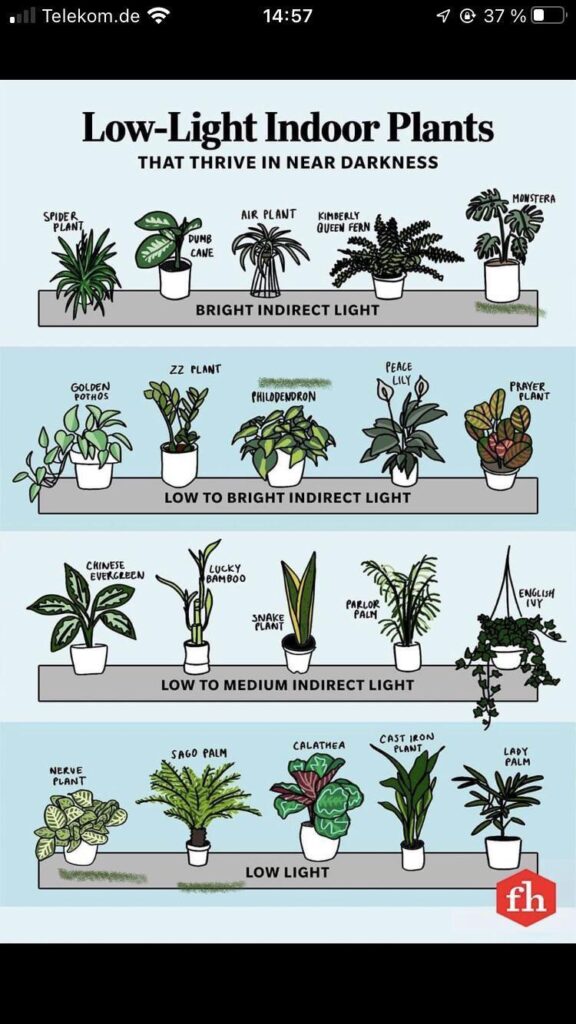
Differences Between North, South, East, and West-Facing Windows
The key difference between window orientations lies in the quality and duration of light they provide, which directly impacts plant growth. North-facing windows offer consistent, indirect light, ideal for shade-tolerant plants. In contrast, south-facing windows deliver intense, direct sunlight for most of the day, making them perfect for sun-loving species like cacti and succulents.
East-facing windows provide gentle morning light, which is cooler and less intense, benefiting plants like African violets that thrive in moderate light. West-facing windows, however, expose plants to harsh afternoon sunlight, which can cause leaf scorch if not managed carefully.
In winter, the sun’s lower angle reduces light intensity across all orientations, but north-facing windows remain the most stable. For urban gardeners, combining these insights with tools like light meters or shadow tests can help optimize plant placement and ensure year-round growth success.
Seasonal Variations in Natural Light
Seasonal shifts dramatically alter the intensity and duration of natural light, especially for north-facing windows. In winter, the sun’s lower angle reduces overall light levels, but the diffuse, indirect light from north-facing windows remains consistent. This stability makes them ideal for plants like ferns and pothos, which thrive in low-light conditions, even as other orientations experience significant fluctuations.
External obstructions, such as buildings or trees, which cast longer shadows in winter. These shadows can further limit light availability, necessitating the use of supplemental lighting like full-spectrum LEDs to maintain plant health.
The reflective properties of snow can amplify light intensity during winter, offering a natural boost for plants near north-facing windows. By strategically rotating plants or repositioning them closer to the window, you can harness these seasonal nuances to optimize growth, even in challenging low-light months.
Characteristics of Plants Suited for Low Light Environments
Plants adapted to low light environments share a fascinating trait: they maximize photosynthesis efficiency under minimal light. For instance, species like snake plants and peace lilies possess broad, dark green leaves rich in chlorophyll, enabling them to capture and utilize even faint light. This adaptation mirrors the survival strategies of forest understory plants, where sunlight is scarce but consistent.
Low-light plants thrive in indirect light but still need exposure to maintain growth. Studies show that plants like pothos can survive with as little as 50 foot-candles of light, but their growth rate and leaf vibrancy improve significantly with supplemental lighting.
Many low-light plants also exhibit slower growth rates, reducing their nutrient and water demands. This makes them ideal for busy urban gardeners, offering a low-maintenance yet visually rewarding indoor greenery solution.
Adaptations of Shade-Tolerant Species
Shade-tolerant plants have evolved remarkable mechanisms to thrive in low-light conditions, with one standout adaptation being their ability to optimize light capture. For example, species like Alocasia macrorrhiza develop thinner leaves with lens-shaped epidermal cells that focus light onto chloroplast-rich mesophyll tissues. This design functions like a natural magnifying glass, ensuring even weak light penetrates deeply for photosynthesis.
Light compensation point—the minimum light intensity required for photosynthesis to balance respiration. Studies reveal that shade-tolerant plants maintain lower respiration rates, conserving energy and prioritizing growth. This efficiency is particularly advantageous in urban settings, where light is often obstructed by buildings.
These plants also exhibit higher chlorophyll b content, enhancing their ability to absorb green and far-red wavelengths. This biochemical tweak not only supports survival but also opens opportunities for integrating such species into biophilic design, where aesthetics meet functionality in low-light interiors.
Benefits of Foliage Plants over Flowering Plants in Low Light
Foliage plants excel in low-light environments due to their energy-efficient growth strategies. Unlike flowering plants, which allocate significant resources to reproductive structures, foliage plants focus on vegetative growth. This allows them to thrive with minimal light, as their energy is directed toward maintaining broad, chlorophyll-rich leaves optimized for photosynthesis.
Flowering plants often struggle to bloom in low light, leading to diminished visual impact. In contrast, foliage plants like Philodendron or Chlorophytum offer consistent greenery, making them ideal for spaces like offices or north-facing rooms where light is limited.
From a maintenance perspective, foliage plants are more forgiving. They require fewer nutrients and less frequent care, aligning with the demands of urban lifestyles. This adaptability not only enhances their practicality but also positions them as a cornerstone of sustainable indoor gardening frameworks.
Top Plant Options for North-Facing Windows
When it comes to north-facing windows, plant selection is all about leveraging adaptability. Take the Nerve Plant (Fittonia), for example. Its intricate veined patterns in pink, white, or silver thrive in indirect light, making it a visual centerpiece even in dim spaces. This plant also underscores a key misconception: low light doesn’t mean no light. It still requires partial shade and consistent humidity to flourish.
Another standout is the Heart-Leaf Philodendron. Known for its cascading vines, this plant thrives even when placed further from the window, where light levels drop significantly. Its resilience to irregular watering makes it a favorite for busy urbanites.
For a more dramatic touch, consider the Golden Pothos. Its variegated leaves brighten shaded corners, but here’s the twist: positioning it closer to the window enhances its patterns, while deeper placement enriches its green tones. These plants prove that strategic placement can amplify both aesthetics and health.
Peace Lily (Spathiphyllum)
The Peace Lily thrives in north-facing windows, but its success hinges on understanding its nuanced relationship with light. While it tolerates low light, placing it too far from the window can stunt flowering. This is because peace lilies require indirect but consistent light to trigger their signature white spathes. Think of it as a delicate balance—too much light scorches the leaves, while too little reduces blooms to mere foliage.
Native to tropical rainforests, peace lilies flourish in environments with 50-60% humidity. Grouping it with other plants or using a pebble tray to create a microclimate. This not only supports growth but also prevents the dreaded brown leaf tips caused by dry air.
For urban gardeners, peace lilies also double as air purifiers, removing toxins like benzene. This makes them a functional choice for improving indoor air quality while adding aesthetic appeal.
Snake Plant (Sansevieria trifasciata)
The Snake Plant is often celebrated for its low-maintenance nature, but its resilience in north-facing windows is deeply tied to its water management. Unlike many houseplants, it stores water in its thick, strap-like leaves, making it highly drought-tolerant. Overwatering, however, is its Achilles’ heel, often leading to root rot. Use a well-draining soil mix, such as one designed for succulents, and water only when the soil is completely dry.
The Snake Plant also exhibits CAM (Crassulacean Acid Metabolism) photosynthesis, allowing it to absorb CO₂ at night. This makes it a unique choice for bedrooms, as it improves air quality while requiring minimal light.
For urban dwellers, its adaptability to fluctuating humidity and temperature levels makes it a versatile option. However, avoid sudden shifts from low light to direct sun, as this can shock the plant. Instead, gradual light adjustments ensure steady growth and vibrant foliage.
ZZ Plant (Zamioculcas zamiifolia)
The ZZ Plant thrives in low-light conditions, but its true strength lies in its rhizome-based water storage system. These underground structures act as reservoirs, enabling the plant to endure extended periods of drought. This feature makes it ideal for individuals who may forget to water regularly, but overwatering remains a critical risk. To mitigate this, use a potting mix with high aeration, such as one containing perlite or lava rocks, and ensure pots have proper drainage.
The ZZ Plant tolerates poor soil conditions, but slightly acidic soil (pH 6.0–6.5) enhances nutrient uptake, promoting healthier foliage. Its ability to filter toxins like benzene and xylene also makes it a practical choice for improving indoor air quality in urban spaces.
For optimal placement, position it near a north-facing window but avoid deep corners. This ensures it receives enough indirect light to maintain its glossy, vibrant leaves without compromising its low-light adaptability.
Chinese Evergreen (Aglaonema)
The Chinese Evergreen excels in low-light environments, but its adaptability to varying humidity levels is a standout feature. While it thrives in moderate humidity, it can tolerate drier indoor air, making it suitable for homes with central heating. However, increasing humidity through pebble trays or grouping plants can enhance its vibrant foliage, especially for variegated varieties that require slightly more light and moisture to maintain their striking patterns.
The plant’s ability to purify air extends beyond aesthetics. Studies have shown that Aglaonema effectively removes toxins like formaldehyde and benzene, making it a functional addition to offices or bedrooms. Its slow growth rate also reduces the need for frequent repotting, aligning with low-maintenance care routines.
For best results, position it close to a north-facing window, ensuring consistent indirect light. Avoid overwatering by allowing the topsoil to dry out between waterings, as its semi-succulent stems store moisture efficiently.
Philodendron Species
Philodendron species, particularly the Heart-Leaf Philodendron (Philodendron hederaceum), are celebrated for their climbing and trailing growth habits, which make them ideal for vertical gardening in low-light spaces. A key aspect often overlooked is their aerial root system, which allows them to anchor onto supports like moss poles or trellises. This not only enhances their aesthetic appeal but also optimizes light capture by elevating foliage closer to available light sources.
Unlike many houseplants, philodendrons can tolerate brief periods of drought due to their ability to store water in their stems. However, consistent watering practices—allowing the topsoil to dry out—promote healthier, more vibrant growth.
For urban gardeners, these plants offer a unique opportunity to integrate biophilic design principles. By pairing them with complementary species like pothos, you can create lush, cascading displays that transform north-facing windows into living art installations.
Pothos (Epipremnum aureum)
A fascinating aspect of Pothos is its ability to thrive in varying light conditions, making it a standout for north-facing windows. What sets it apart is its adaptive photosynthetic efficiency. Research shows that Pothos can adjust chlorophyll production to optimize light absorption, even in low-light environments. This trait ensures steady growth while maintaining its signature variegation, provided the plant is not placed in complete darkness.
By removing toxins like formaldehyde and benzene, Pothos contributes to healthier indoor air quality, a critical benefit in urban settings. Pairing this with its low-maintenance watering needs—allowing soil to dry between waterings—makes it ideal for busy lifestyles.
For practical applications, consider training Pothos on vertical trellises or letting its vines cascade from hanging pots. This not only maximizes aesthetic appeal but also enhances its light exposure, creating a dynamic, functional indoor garden.
Cast Iron Plant (Aspidistra elatior)
The Cast Iron Plant excels in its resilience to neglect, but its true strength lies in its ability to thrive in consistently low-light conditions. This is due to its highly efficient energy conservation mechanisms, including a reduced respiration rate, which minimizes energy loss in dim environments. Unlike many plants, it tolerates irregular watering cycles, thanks to its robust root system that stores moisture effectively.
Tolerance to temperature fluctuations, makes it ideal for drafty spaces near north-facing windows. Studies suggest that its broad, waxy leaves not only enhance light capture but also reduce water loss through transpiration, a critical adaptation for indoor environments.
For real-world applications, use the Cast Iron Plant in offices or homes with unpredictable care routines. Pair it with well-draining soil to prevent root rot, and consider occasional misting to maintain humidity. This approach ensures longevity while requiring minimal intervention, perfect for modern lifestyles.
Care Guidelines for North-Facing Window Plants
Caring for plants in north-facing windows requires a nuanced approach, balancing light, water, and humidity. While these windows provide consistent but indirect light, many plants still benefit from occasional rotation to ensure even growth. Think of it as turning a solar panel to maximize energy capture—small adjustments can make a big difference.
Overwatering is a bigger risk, as reduced light slows evaporation. Use the “finger test” to check soil moisture: if the top inch feels dry, it’s time to water. Pair this with well-draining soil to prevent root rot.
Grouping plants together creates a microclimate, boosting moisture levels naturally. Alternatively, a pebble tray or occasional misting can mimic the plant’s native environment. These small, intentional steps ensure your plants not only survive but thrive in low-light conditions.
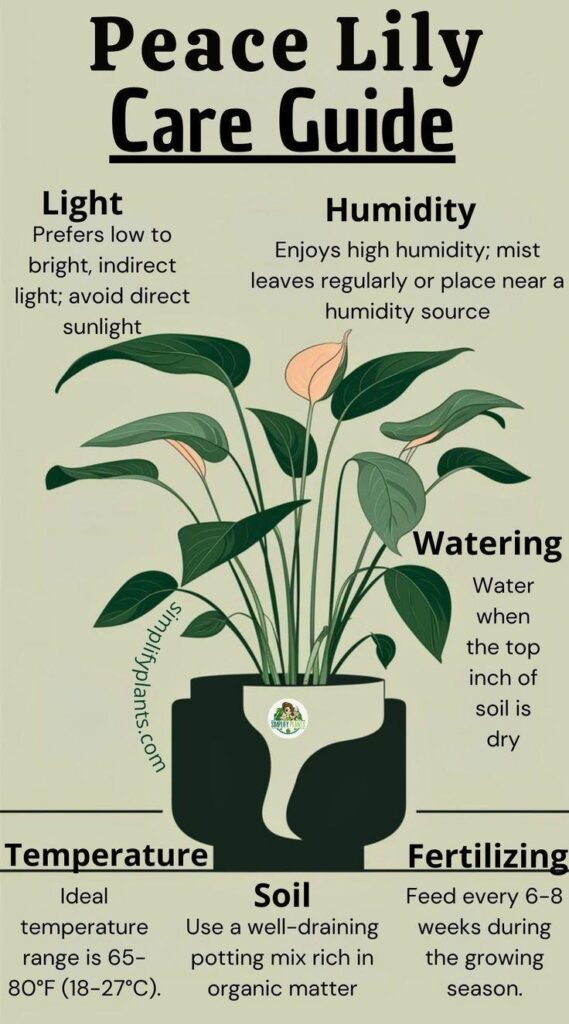
Optimizing Watering Schedules
Watering plants in north-facing windows is less about frequency and more about precision. These plants often grow slower due to limited light, meaning their water needs are reduced. Overwatering, a common pitfall, can suffocate roots by depriving them of oxygen. Instead, think of watering as a calibrated response to the plant’s environment.
Humidity, temperature, and soil type all influence water retention. For instance, a peace lily in a terracotta pot will dry out faster than one in plastic due to terracotta’s porous nature. Use tools like moisture meters or observe subtle cues—wilting leaves or dry soil edges—to fine-tune your schedule.
Water deeply but less frequently. This encourages roots to grow downward, seeking moisture, which strengthens the plant. By aligning watering habits with the plant’s natural rhythms, you create a sustainable care routine that minimizes stress and maximizes growth potential.
Soil Selection and Repotting Techniques
The key to thriving plants in north-facing windows lies in selecting a soil mix that balances moisture retention with aeration. A blend of peat moss, perlite, and compost works well, as it retains water without becoming waterlogged. This is critical for low-light plants, which often have slower water uptake due to reduced photosynthesis.
Use pots with drainage holes to prevent root rot, and repot only when roots outgrow the container. Repot during the plant’s active growth phase (spring or early summer) to minimize stress and promote recovery.
Consider layering coarse material like gravel at the bottom of the pot to enhance drainage. This technique, borrowed from hydroponics, ensures oxygen reaches the roots. By combining thoughtful soil selection with strategic repotting, you create an environment that supports long-term plant health, even in challenging low-light conditions.
Fertilization Strategies for Low Light Plants
Low-light plants require a tailored fertilization approach due to their slower growth rates. Over-fertilizing can lead to salt buildup in the soil, which stresses roots and inhibits nutrient absorption. A diluted, balanced fertilizer (e.g., 10-10-10) applied quarterly is often sufficient, ensuring plants receive essential nutrients without overwhelming their systems.
Organic fertilizers like worm castings or compost tea offer a gentler alternative. These options release nutrients gradually, mimicking natural soil processes and reducing the risk of overfeeding. Plus, they improve soil structure, which is particularly beneficial for plants in low-light conditions where root health is paramount.
Fertilize during active growth periods, typically spring and summer, when plants can utilize nutrients effectively. Avoid fertilizing in winter, as reduced light slows metabolic activity. By aligning fertilization with plant biology, you not only enhance growth but also create a sustainable care routine adaptable to any indoor environment.
Pruning and Maintenance Tips
Pruning low-light plants isn’t just about aesthetics—it’s a strategic tool to optimize light absorption. Removing leggy or yellowing leaves redirects energy to healthier growth, ensuring the plant thrives in limited light. For vining species like pothos, trimming encourages bushier growth, which maximizes the plant’s ability to capture diffuse light from north-facing windows.
Dirty shears can introduce pathogens, especially in humid indoor environments where fungal infections spread easily. Use rubbing alcohol or a diluted bleach solution to sanitize before each cut, reducing the risk of disease.
Prune during active growth phases, typically spring and summer, to minimize stress on the plant. For species like peace lilies, deadheading spent blooms prevents energy waste. By integrating these practices, you not only maintain plant health but also create a visually balanced indoor garden that thrives in low-light conditions.
Managing Pests and Diseases
Humidity control is a pivotal yet underappreciated factor in managing pests and diseases for north-facing window plants. Low-light environments often coincide with higher humidity, creating ideal conditions for pests like spider mites and fungal pathogens. Using a hygrometer to monitor humidity levels and maintaining a range of 40–60% can significantly reduce infestations.
Biological controls, such as introducing predatory insects like ladybugs, offer a sustainable alternative to chemical pesticides. These natural predators target common pests without harming the plant or indoor air quality. For fungal issues, neem oil serves as an effective, eco-friendly treatment, disrupting fungal growth cycles while being safe for most houseplants.
Spotting early signs—such as webbing from mites or black spots from fungal infections—allows for targeted intervention. By combining proactive monitoring with environmentally conscious solutions, you create a resilient indoor ecosystem that minimizes pest and disease risks while promoting plant vitality.
Advanced Care Strategies
To truly optimize plant health in north-facing windows, consider leveraging microclimate engineering. For instance, grouping plants with similar humidity needs creates a localized environment that mimics their natural habitat. Studies show that this approach can increase ambient humidity by up to 5%, reducing stress on tropical species like the Peace Lily.
Rotating plants weekly to ensure even light exposure. While north-facing windows provide consistent diffuse light, uneven exposure can lead to lopsided growth. Think of it as “plant yoga”—a simple adjustment that promotes symmetry and structural integrity.
Compact soil in low-light conditions can suffocate roots, leading to stagnation. Using a chopstick or skewer to gently loosen the topsoil improves oxygen flow, much like aerating a lawn. These small, actionable tweaks not only enhance plant vitality but also deepen your connection to their care, transforming routine maintenance into a mindful practice.
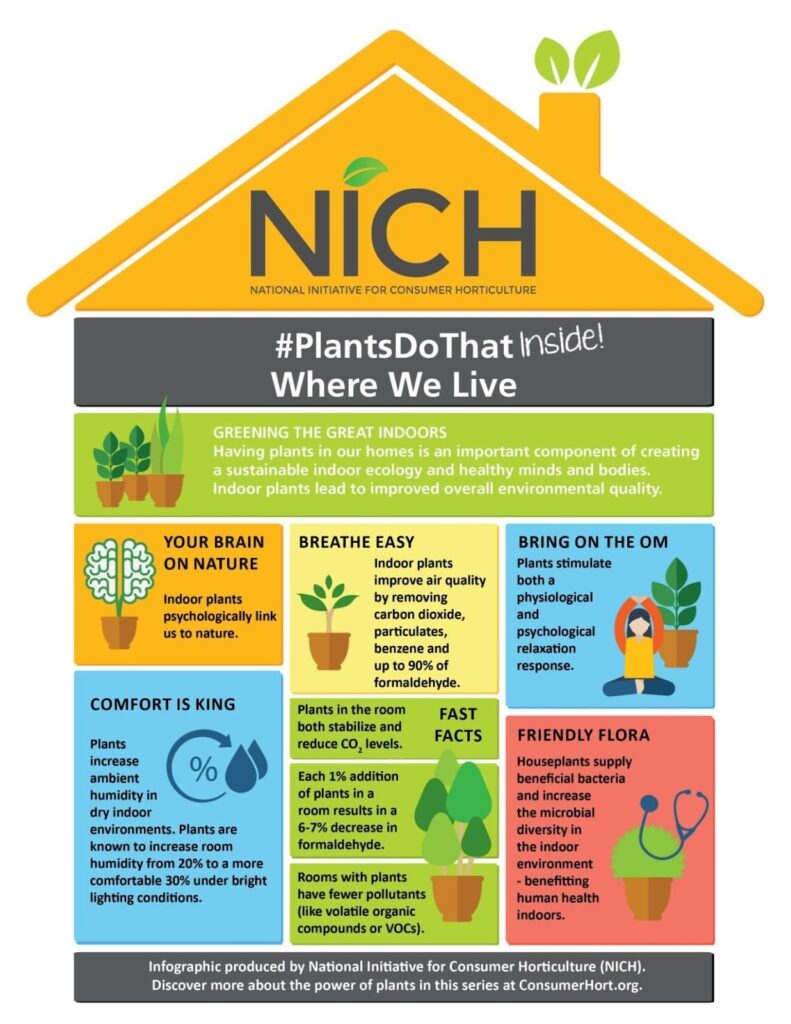
Supplemental Lighting Solutions
When natural light falls short, full-spectrum LED grow lights emerge as the gold standard for north-facing windows. Unlike traditional bulbs, these LEDs mimic the sun’s spectrum, providing the red and blue wavelengths essential for photosynthesis. Research from horticultural studies highlights that plants exposed to full-spectrum LEDs show up to 30% faster growth compared to those under standard fluorescent lights.
Positioning the light 6–12 inches above the plant ensures optimal coverage without causing heat stress. For larger setups, consider adjustable fixtures that allow you to fine-tune intensity as plants grow—a concept borrowed from commercial greenhouses.
Mimicking natural daylight cycles with timers (e.g., 12–16 hours of light daily) prevents overexposure, which can stunt growth. Think of it as creating a “sunrise-to-sunset” rhythm indoors. By integrating these strategies, you not only compensate for low light but also unlock the full potential of your indoor garden.
Humidity Control and Its Impact
Creating a microenvironment with elevated relative humidity can significantly enhance plant health, especially for tropical species. Grouping plants together is a simple yet effective strategy. As plants transpire, they release moisture into the air, naturally increasing local humidity. Studies show that this clustering effect can raise humidity levels by up to 10%, reducing water loss and stress on foliage.
For a more controlled approach, pebble trays filled with water offer a dual benefit: evaporation boosts humidity while preventing root rot by keeping pots elevated. This method is particularly useful in homes with central heating, where humidity often drops below 20%.
While stagnant air can encourage fungal growth, a small fan ensures even humidity distribution without creating drafts. By combining these techniques, you can maintain a stable microclimate, fostering robust growth even in challenging indoor conditions.
Monitoring and Adjusting for Seasonal Changes
Seasonal shifts in light intensity and duration demand proactive adjustments to plant care. During winter, when natural light diminishes, integrating full-spectrum LED grow lights can bridge the gap. These lights mimic sunlight, ensuring plants maintain photosynthetic activity. Positioning them at a 12-18 inch distance prevents overheating while maximizing light absorption.
Drafts from windows in colder months can stress plants, leading to stunted growth. Insulating window areas with thermal curtains or repositioning plants slightly away from the glass can mitigate this issue without compromising light access.
Central heating in winter often reduces indoor humidity to levels unsuitable for tropical plants. Using a hygrometer to monitor humidity and deploying humidifiers ensures optimal conditions. By synchronizing these strategies, you can create a stable environment, allowing plants to thrive year-round despite external seasonal variability.
Integrating North-Facing Plants into Interior Design
North-facing plants are more than functional; they’re design assets that transform spaces. For instance, pairing the ZZ plant with minimalist decor creates a striking contrast, its glossy leaves adding depth to neutral palettes. Similarly, cascading Golden Pothos on floating shelves introduces movement, drawing the eye upward and enhancing vertical space.
Adaptability allows for dynamic placements, such as grouping Chinese Evergreens with textured planters to create focal points. Expert designers often use these plants to soften harsh architectural lines, blending biophilic design with modern aesthetics.
Studies show that dense foliage, like that of the Cast Iron Plant, absorbs sound, reducing echo in open-plan layouts. By integrating these plants thoughtfully, you not only elevate visual appeal but also enhance functionality, proving their value extends far beyond aesthetics.
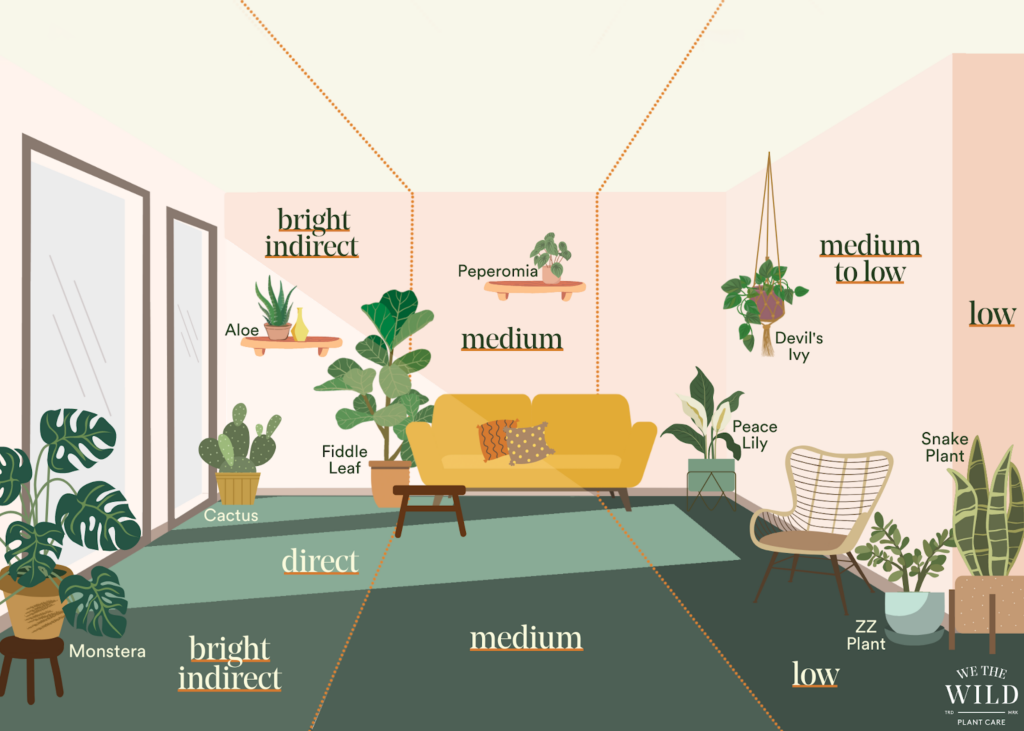
Aesthetic Considerations
The interplay of light and texture is pivotal when designing with north-facing plants. For example, the Peace Lily thrives in indirect light, and its glossy, arched leaves create a subtle sheen that complements matte surfaces like concrete or wood. This contrast not only enhances visual depth but also introduces a tactile balance, making the space feel curated yet approachable.
Mirrors or metallic planters amplify the soft, diffuse light from north-facing windows, creating an illusion of brightness. This technique is particularly effective in compact spaces, where light manipulation can make a room feel more expansive.
Tall, upright species like the Snake Plant can frame furniture or architectural features, while trailing plants like Pothos soften hard edges. By layering these elements, you can craft a dynamic, multi-dimensional aesthetic that evolves with the changing light throughout the day.
Space Optimization with Vertical Gardens
Maximizing vertical space with living walls is a game-changer for north-facing interiors. These installations leverage the consistent, diffuse light to support shade-tolerant plants like Ferns or Philodendrons. By stacking plants vertically, you not only save floor space but also create a striking visual centerpiece that doubles as a natural air purifier.
Vertical gardens allow for easy rearrangement, enabling you to adapt plant placement based on seasonal light shifts. For instance, moving light-hungry plants to higher tiers during winter can optimize their exposure while maintaining the garden’s aesthetic balance.
Integrating vertical gardens with smart irrigation systems further enhances efficiency. Drip irrigation minimizes water waste and ensures even distribution, critical for plants at varying heights. This approach bridges interior design with sustainable practices, offering a scalable framework for urban dwellers to incorporate greenery without compromising on space or functionality.
Emerging Trends and Innovations
The rise of biophilic design has redefined how we approach north-facing window plants. Designers are now integrating smart planters equipped with sensors that monitor soil moisture, light levels, and even air quality. These devices provide real-time feedback, ensuring optimal care for low-light plants like ZZ Plants or Chinese Evergreens. Think of it as having a personal plant coach in your home.
Studies show that strategically placed mirrors can increase light intensity by up to 30%, creating a more hospitable environment for shade-tolerant species. This technique bridges interior design with plant care, offering dual benefits.
Finally, modular green walls are gaining traction. Unlike traditional vertical gardens, these systems allow for easy customization and maintenance. By combining technology with adaptability, these trends challenge the misconception that low-light spaces limit plant diversity, proving that innovation can thrive even in the shadows.

Smart Technology in Plant Care
Smart technology is revolutionizing plant care by turning guesswork into precision. Take smart sensors, for example. These devices monitor variables like soil moisture, light exposure, and temperature, then sync with apps to provide actionable insights. Imagine your Peace Lily thriving because an app reminded you to adjust its watering schedule during a dry spell. It’s not just convenience—it’s tailored care.
By analyzing historical data, they can forecast plant needs, such as when to fertilize or rotate for even light exposure. This approach borrows from fields like data science and climate modeling, making plant care more scientific than ever.
For urban gardeners, the implications are profound. Compact spaces with limited light, like north-facing windows, benefit immensely. Pairing smart lighting systems with sensors ensures plants receive the right spectrum and intensity, challenging the myth that low-light areas are inherently restrictive.
Sustainable and Eco-Friendly Practices
Closed-loop watering systems collect excess water from plant drainage and recycle it for future use, significantly reducing water waste. For north-facing window plants, which often require careful moisture management, this approach ensures hydration without overwatering—a win for both the plant and the planet.
Biodegradable pots decompose naturally, enriching the soil when discarded. Pairing them with low-light plants like ferns or snake plants creates a sustainable cycle, aligning with principles of circular design often seen in permaculture.
Biochar improves soil aeration and retains nutrients, reducing the need for synthetic fertilizers. This ties into carbon sequestration efforts, making your indoor garden a micro-scale contributor to climate action. By adopting these methods, you’re not just growing plants—you’re cultivating a greener future.
FAQ About Growing Thriving Plants in North-Facing Windows
What are the best plant species for north-facing windows?
Low-light plants thrive in indirect illumination, making them ideal for north-facing windows:
- Cast Iron Plant: Exceptionally durable, tolerates neglect.
- Snake Plant: Drought-tolerant, stores water in its leaves.
- Peace Lily: Thrives in low light, purifies indoor air.
- ZZ Plant: Endures low light, needs infrequent watering.
- Golden Pothos: Adaptable, air-purifying, and easy to grow.
How can I optimize light conditions for plants in a north-facing window?
- Positioning: Place plants close to the window, avoiding obstructions.
- Supplemental Lighting: Use full-spectrum LED grow lights, especially in winter.
- Reflective Surfaces: Add mirrors or light-colored walls to amplify light.
- Seasonal Adjustments: Increase supplemental lighting during darker months.
- Rotating Plants: Turn plants regularly for even light exposure.
What challenges do north-facing plants face and how to address them?
- Limited Light: Use LED grow lights and maximize exposure.
- Overwatering Risks: Monitor moisture, water deeply but less frequently.
- Humidity Control: Boost humidity with pebble trays, plant grouping, or humidifiers.
- Pest & Disease Prevention: Improve air circulation and inspect plants regularly.
What are the soil and watering requirements for low-light plants?
- Well-Draining Soil: Use peat-perlite mix to prevent root rot.
- Watering: Water deeply but allow soil to partially dry.
- Avoid Overwatering: Adjust frequency based on season and plant growth.
How can supplemental lighting and humidity help north-facing plants?
- LED Grow Lights: Mimic sunlight and ensure consistent photosynthesis.
- Humidity Management: Use pebble trays, plant clustering, or humidifiers to prevent dryness.
By applying these strategies, you can keep your north-facing window plants healthy and vibrant year-round.
Conclusion
Caring for plants in north-facing windows is not just about working with limitations—it’s about leveraging unique opportunities. These spaces, often dismissed as too dim, can become thriving microclimates with the right strategies. For instance, pairing shade-tolerant plants like the Snake Plant with full-spectrum LED lighting creates a balance that mimics natural ecosystems. Think of it as crafting a rainforest understory in your living room.
A common misconception is that low-light plants are “indestructible.” While resilient, they demand precise care—overwatering remains their Achilles’ heel. Studies show that well-draining soil reduces root rot by up to 30%, underscoring the importance of tailored soil mixes.
Experts emphasize that humidity control is equally vital. Grouping plants not only boosts moisture levels but also fosters a symbiotic environment, much like a natural forest floor. By embracing these nuanced approaches, you transform challenges into opportunities for lush, sustainable indoor greenery.
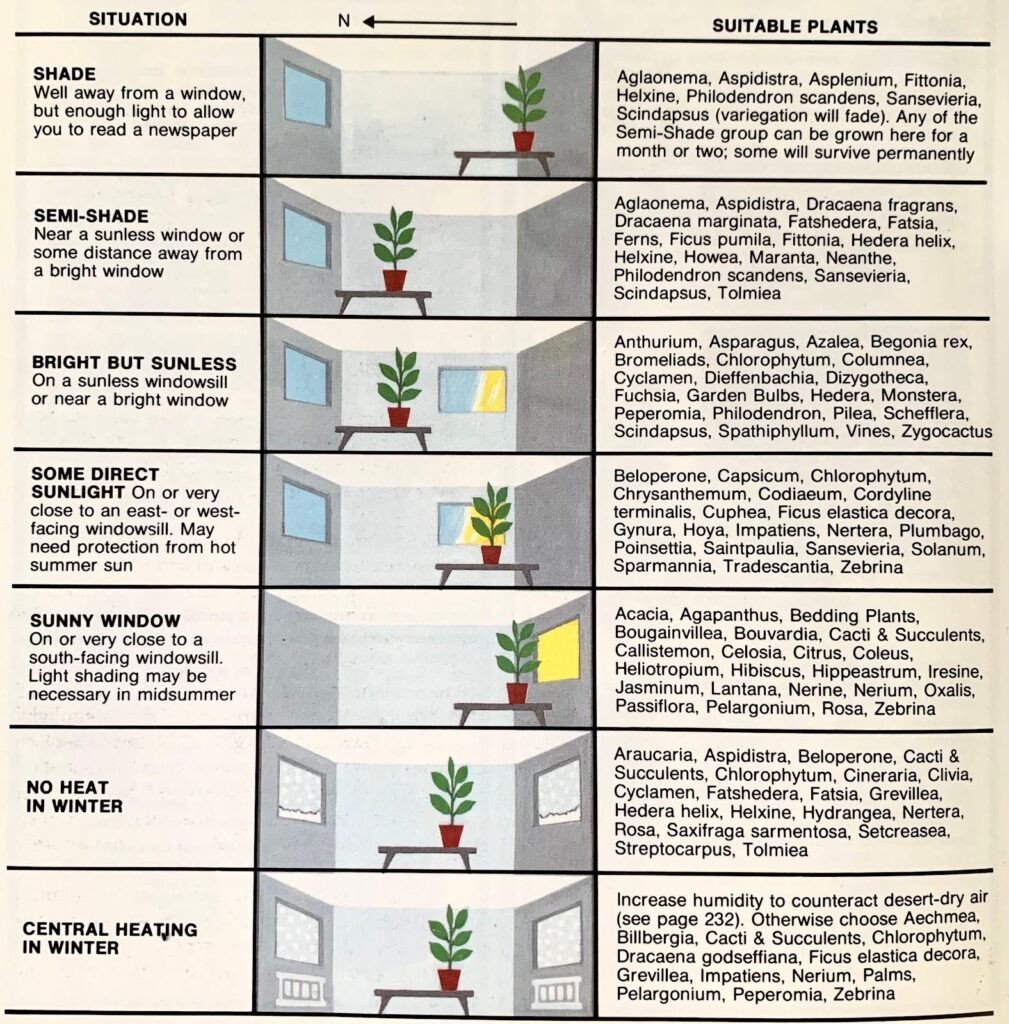
Creating a Thriving Indoor Garden in Any Light Condition
The secret to thriving indoor gardens lies in layering light sources and optimizing plant placement. For example, combining natural light from a north-facing window with strategically positioned grow lights ensures even light distribution. Studies reveal that plants exposed to consistent light cycles—mimicking dawn-to-dusk patterns—show up to 40% better growth rates compared to erratic lighting setups.
Humidity is another overlooked factor. By grouping plants with varying transpiration rates, you can create a self-sustaining microclimate. This approach mirrors natural ecosystems, where high-transpiration species like ferns elevate ambient humidity, benefiting companions like peace lilies.
Conventional wisdom often dismisses low-light spaces as unsuitable for variegated plants. However, reflective surfaces—mirrors or metallic planters—can amplify available light, making these plants viable options. The key is experimentation: test light levels with shadow tests or inexpensive light meters to fine-tune your setup. With these techniques, any space can become a lush, functional garden.
Related posts
![]()
About Michelle Wilde
Michelle Wilde is a stay-at-home mom and avid plant lover. Armed with a post-graduate degree in Computer Science (no kidding!), she loves researching plants and landscapes. When she is not caring for her 4 kids, she spends time on her passion for plants. She blogs at www.indoorplantschannel.com, the trusted source for indoor plants.
Learn more
Subscribe
* You will receive the latest posts and updates about indoor plants!
Search
Recent Posts
Categories
- Beginner Guides (10)
- FAQ (206)
- General (2)
- How-To Guides (212)
- Indoor Plants (214)
- Pest Management (2)
- Plant Problem Solutions (4)
- Seasonal Growing (2)
- Specialized Environments (2)
- Specific Plant Care (3)
- Technical Growing (2)
